Hokkaido is a food lover's paradise, brimming with delightful gastronomic scenes. From ramen shops in traditional neighborhoods to upscale sushi dinners at Michelin-star eateries, Hokkaido never fails to amaze travelers with its must-try eats and iconic dishes.
But it also implies that there is an insurmountable number of food options. To help you navigate through the culinary landscape of Hokkaido and discover the best Hokkaido food, our foodie guide for first-time visitors to Hokkaido is divided into several sections, including Hokkaido food culture, best food to eat in Hokkaido, Types of restaurants and how to order, and more. Let’s go and find the true taste of Hokkaido!
Table of Contents
Hokkaido Food Culture
Discover the Best of Hokkaido Food
Types of Restaurants
How to Order and Pay at a Japanese Restaurant in Hokkaido
Dietary Customs
Hokkaido Food Culture
In Japan, each island or city has its own unique food culture. Hokkaido, the northernmost of the Japanese islands, is one of the culinary capitals of Japan and is known as the “Kitchen of Japan”. Hokkaido is not only famous for its seafood, but also for a variety of local dishes such as ramen, Genghis Khan barbecue, and soup curry.
Hokkaido's culinary culture is very much a regional specialty. It is best characterized as a fusion of geography and ingredients that incorporates the bounty of nature and the influence of multi-ethnic cultures (e.g., wagashi, yoshoku, and Ainu culture). Fruits and vegetables are harvested in the spring and summer, grains are harvested in the fall, and seafood is plentiful in the winter.
The Ainu people, the original inhabitants of Hokkaido, excelled in utilizing natural ingredients such as wild fish, venison, mountain vegetables, and fermented foods. The mountain flavors and fermented ingredients of the Ainu people have survived in modern Hokkaido cuisine.
Hokkaido cooking style emphasizes the original flavor of ingredients, such as seafood, dairy products, agricultural products, meat, and grains.
Many delicious foods in Hokkaido are closely related to traditional festivals. For example, at the Furano Hanafuda Festival, you can sample ice cream, corn, and cantaloupe. At the Noboribetsu Jigoku Festival, there are special onsen eggs and onigiri hot pots. At the Sapporo Snow Festival, winter gourmet Hokkaido includes crab, miso ramen, and hot drink booths.
Discover the Best of Hokkaido Food
Below, we round up the most famous dishes, drinks, and snacks that you should try during your trip to Hokkaido.
Sushi
Sushi is the most famous food in Japan, and the ingredients are mainly rice and vegetables. Sushi in Hokkaido is not only a common dish, but also a very local specialty. Due to the abundance of fresh Hokkaido seafood, sushi is more flavorful, seasonal, and visually appealing than in other parts of Honshu.
Nigiri sushi (にぎり寿司), commonly found in high-end sushi restaurants, emphasizes the size of the seafood and the skill of the chef, while Oshizushi (おしおししし), popular in some parts of Hokkaido, is a neatly shaped dish suitable for take-out.
Kaisen-don seafood bowl (海鮮丼), although not traditional sushi, is extremely popular in Hokkaido, with fresh sashimi spread over rice. Rustic sushi is often served with local pickles, soy sauce-marinated fish, and other ingredients to make specialty sushi.
Seasonal-only sushi varieties include sea urchin sushi from Rishiri or Rebun Island in summer (June to August) and salmon roe sushi in fall (September to November).
Average price of Sushi: Rotary sushi is priced at ¥1,000 - ¥2,500 ($7–17USD), a la carte at ¥3,000 - ¥6,000 ($ 20- 42USD), and high-end sushi restaurants at ¥8,000 - ¥20,000+ ($55–138USD).
Sea Food
Known as “Japan's Seafood Paradise”, Hokkaido is home to some of the richest and highest quality seafood in Japan. It seems that most of Hokkaido food is about seafood. Hokkaido's three most famous crabs: hairy crab, king crab, and Hanasaki crab, can be boiled, grilled, or served in hot pots. Fresh, large scallops are usually grilled on site at the market and eaten in their shells. Of course, Rishiri and Rebun Island sea urchins are especially recommended and are abundant in summer. There are also various kinds of fish, such as salmon, okonomiyaki, halibut, and mako.
Where to Eat Seafood in Hokkaido?
Freshly cooked at Sapporo Nijo Market, Hakodate Asaichi, and Otaru Triangle Market. We suggest you try a seafood rice bowl (seafood donburi), live sea urchins freshly opened, and freshly boiled crabs.
You can also try a variety of shellfish, fish, and crab sushi.
Whole crab dishes.
| City/Region | Signature Seafood | Best Season to Eat |
|---|---|---|
| Sapporo | King crab (tarabagani), horsehair crab (kegani) | Winter (December–February), Spring (March–May) |
| Hakodate | Live squid (ika), sea urchin (uni) | Summer (June–August) |
| Otaru | Salmon roe (ikura), surf clam (hokkigai) | Autumn (September–November), Spring–Summer (May–July) |
| Kushiro | Pacific saury (sanma), Hanasaki crab | Autumn (September–October), Summer (June–August) |
| Nemuro | Hanasaki crab, salmon roe | Summer (July–August), Autumn (September–October) |
| Wakkanai / Rebun Island | Purple sea urchin (murasaki uni), scallops (hotate) | All year (especially winter for scallops) |
Ramen
Hokkaido is the only region in Japan with three major flavors of ramen. As a must-try food in Hokkaido, ramen is not only an everyday fast food but also a cultural icon. Many family-run Hokkaido ramen stores have been passed down for centuries.
Hakodate ramen, a salt-based ramen, was originally from the Edo period of China, which is regarded as a local favorite. Sapporo's Miso Ramen is thick and savory with fried bean sprouts, corn, and cream. Shio Ramen in Hakodate is light and refreshing, emphasizing the freshness of the soup. Asahikawa's Shoyu Ramen has a slight hint of animal fat, making it a good Hokkaido food in winter.
Other ramen specialties include Otaru's seafood ramen, Tokachi's black ramen, and Wakkanai and Abashiri's crab ramen.
Average price: The price of a regular bowl of ramen is ¥800 to ¥1,000 ($5.5 - 7USD), while the price of ramen with sea urchin and crab meat is ¥1,200 to ¥1,500 ($8–10.5USD)
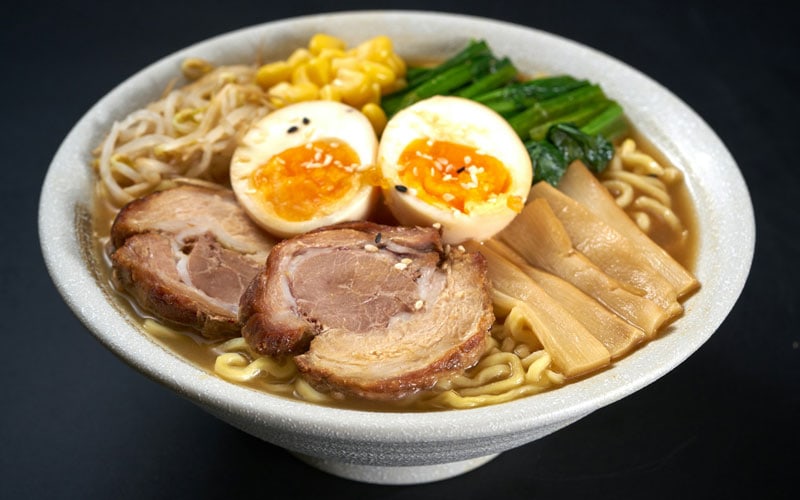
Best Places to Eat Ramen in Hokkaido
Ramen Alley in Sapporo is home to over a dozen ramen shops of different styles, and definitely the best place to taste authentic ramen in Hokkaido. Wondering which are the most recommended restaurants? Consider Sumire, Ebi Soba Ichigen, Shirakawa Mountain Villa, or Santouka.
For ramen lovers, Sapporo Ramen Kyowakoku inside the ESTA Department Store in Sapporo is another must-visit place, with a collection of famous ramen shops from all over Hokkaido.
Located at New Chitose Airport, the Hokkaido Ramen Dojo is a good choice for travelers to try Hokkaido food upon arrival immediately or before leaving.
Meat
Looking for meat food to eat in Hokkaido? You will love the local varieties of Wagyu beef, lamb, pork, and chicken, combined with ingredients from the farm and dairy products.
The most famous meat dish of Hokkaido, Jingisukan (ジンギスカン, “Genghis Khan”) grilled mutton dish consisting of slices of roasted lamb with onions, bean sprouts, and sauce. With a unique flavor, it doesn't stink. Sapporo, Obihiro, and Furano are the best places to eat this Hokkaido dish.
Shiraoi Wagyu and Tokachi Wagyu have tender and juicy meat. Where to eat? It is recommended that you go to Shirakawa Town and Obihiro.
Tokachi Butadon is cooked with thick cuts of pork grilled in a sauce and served over rice with a flavorful sauce.
Another local flavor of Hokkaido, the venison barbecue and stew dishes of the Doto region, are low in fat and high in protein.
Dairy Products
Hokkaido is the largest producer of dairy products in Japan. Its high-quality cow's milk and exquisite craftsmanship produce many high-quality, locally-specialized dairy products, including milk, cheese, butter, yogurt, ice cream, and desserts.
When you visit Furano, you can experience a cheese workshop and an ice cream-making experience. Tokachi in Obihiro is a cheese farmer's kingdom where you can experience pasture food. Otaru's LeTAO cheesecake is a creamy dessert not to be missed.
Farm Products
With its cool climate, wide temperature difference between day and night, and fertile land, Hokkaido produces a large number of high-quality agricultural products. Cereals include potatoes, wheat, soybeans, and sweet corn. Vegetables include onions, pumpkins, carrots, asparagus, cabbage, and lettuce. Fruits are best known for Yubari Melon, as well as strawberries and blueberries. You can taste the delicious farm food in Hokkaido and participate in seasonal fruit picking.
Beer
When you taste Hokkaido's food, don't miss Hokkaido's beer.
Sapporo Beer is one of Japan's first breweries, founded in 1876, and Otaru Beer is brewed in the German tradition, using Hokkaido ingredients. Niseko Brewing, next to the Niseko Valley Ski Resort, uses spring water from Mt. Goat's Foot with local malt, and Abashiri Beer's interesting creations, such as Blue Stream Ice Beer, are brewed with icy water from the Sea of Okhotsk. There's also Hakodate Beer and Kamikawa Taisetsu Brewery.
Average price: Draft beer in a cup (500ml) ¥600 to ¥900 ($5.2–6.2 USD)
Street Food
Hokkaido offers a wide variety of snacks, which are suitable for immediate eating on the street and are often purchased as souvenirs.
Curry soup (ス - プカレ -) contains vegetables, chicken legs, etc.
Roasted corn (焼 とうもろこし) with miso or soy sauce, sweet and delicious. It can be found in Furano and Sapporo Odori Park during summer festivals.
Takoyaki (たこ焼), though not native to Hokkaido, is a local flavor with kelp stock and cheese.
Korokke (コロッケ) is made from Hokkaido potatoes that are crispy on the outside and soft on the inside, and is commonly found in convenience stores and snack stalls.
Soft-serve ice cream (ソフトクリーム) is made with fresh milk from Tokachi or Furano and is a popular Hokkaido food in summer.
Hana-zukuri (grilled squid) is a common food on the beach. A whole squid is grilled over a charcoal fire and flavored with soy sauce or spices.
Where to Eat the Street Food of Hokkaido
Sapporo Odori Park: During the summer food festival, this place becomes the most famous food market in Hokkaido. All kinds of snack stalls gather together, making it the best place to experience street food.
Hakodate Asaichi and Otaru Canal: You can enjoy fresh seafood and local snacks while walking around.
Night markets at onsen ryokan (hot spring hotels): At night, you can try local flavors such as roasted corn and creamed potatoes at open-air markets.
Station convenience stores: such as 7-11, Lawson, and Seicomart, also offer local Hokkaido street food.
Types of Restaurants
The variety of the best places to eat in Hokkaido is mind-blowing–sit down to Sushi dining, tuck into Izakaya, or hang out at Teishoku.
Sushi restaurants specialize in fresh seafood, ranging from high-class sushi nigiri-zushi (made by a sushi chef on site) to popular and relatively inexpensive rotary sushi (where the sushi tray circulates on a conveyor belt).
Ramen stores (ラーメン屋) can be found in all major cities in Hokkaido.
Teishoku offers family-style set meals, such as yakitori (grilled fish), tonkatsu (deep-fried pork cutlet), and miso soup with rice. It usually includes a main course, white rice, miso soup, side dishes, and pickles. Teishoku is frequented by residents and is affordable. Best for lunchtime.
Izakaya (いざかや), a Japanese-style bistro, is a great place for late-night Hokkaido food, serving yakitori, yakitori, tempura, sashimi, stir-fry, deep-fried dishes, salads, and alcoholic beverages. There are many izakayas in nightlife areas such as Sapporo's Tono and Otaru Canal neighborhoods for those who want to experience the Japanese “after-work dining culture”.
Robatayaki (炉端焼き) is a traditional charcoal-grilled style of cuisine where guests sit face-to-face with the chef around the fire. Fish, shellfish, and vegetables are grilled over live charcoal. It is more popular in port cities such as Sapporo and Kushiro.
How to Order and Pay at a Japanese Restaurant in Hokkaido
Ordering food at restaurants in Hokkaido is easy, even if you don't speak Japanese. Most places have illustrated menus (such as traditional restaurants, izakaya, and sushi stores), English menus, or ordering machines (common in ramen and fast food restaurants).
Some restaurants settle the bill at your seat. When you finish your meal, the waiter will bring you the bill. Some require you to show your meal ticket at the counter or order from the menu.
Payment can be made in cash or by IC card (such as Suica and PASMO). Restaurants in big cities mostly accept international credit card payments.
Generally, there is no need to tip.
Useful Phrases
| Japanese | English |
|---|---|
| すみません (Sumimasen) | Excuse me / Sorry |
| 英語のメニューはありますか? (Eigo no menyū wa arimasu ka) | Do you have an English menu? |
| これをください (Kore o kudasai) | I’ll have this one, please |
| おすすめは何ですか? (Osusume wa nan desu ka) | What do you recommend? |
| ベジタリアンです (Bejitarian desu) | I am a vegetarian |
| 魚は食べられません (Sakana wa taberaremase) | I cannot eat fish |
| 辛いものは苦手です (Karai mono wa nigate desu) | I don’t like spicy food |
| お冷をください (Ohiya o kudasai) | Cold water, please |
| 瓶ビールをください (bin-biru) | Bottled Beer |
| お茶をください (Ocha o kudasai) | Tea, please |
| 会計をお願いします (Kaikei o onegaishimasu) | The check, please |
| 別々でお願いします (Betsubetsu de onegaishimasu) | Separate checks, please |
| ごちそうさまでした (Gochisōsama deshita) | Thank you for the meal |
Dietary Customs
Before enjoying Hokkaido food, it is recommended that you learn a little bit more about the local food customs.
As we mentioned earlier, local residents are accustomed to eating seafood in the freshest way possible.
Because of the high snowfall and to cope with the cold winter months, traditional local cuisine (such as miso ramen and Genghis Khan barbecue) is relatively heavy in flavor and high in calories.
Table manners in Hokkaido are generally in line with those throughout Japan:
1. Chopsticks (はし) should not be inserted into rice (similar to the act of making offerings). Avoid “piercing” food with chopsticks, pointing at people, or passing food (only at cremation ceremonies).
2. Do not talk loudly, burp, or play with your cell phone during meals. However, you may make sounds to indicate deliciousness when eating ramen.
3. Eating while walking down the street is not recommended.
4. Show respect for all dishes and don't be overly picky, even if you don't like them.
5. Only rice bowls and miso soup bowls may be served. Plate items or fish should be served on the table.
6. Do not over-dip sushi in soy sauce. Do not add wasabi or shichimi powder to your food, especially in fine restaurants.
Experience Authentic Hokkaido Food with Hi Five Trip
When it comes to the gourmet food in Hokkaido, choose one of our popular Hokkaido tours to eat through the unique culinary landscapes with various deliciously mouthwatering options to try.
As always, we can tailor-make a Japan tour to Hokkaido for you, with a memorable gastronomic experience promised.

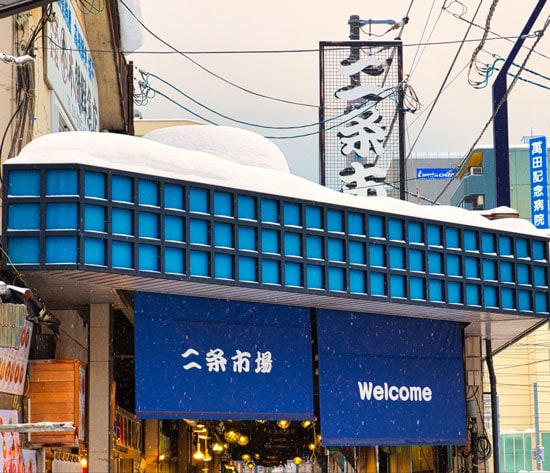
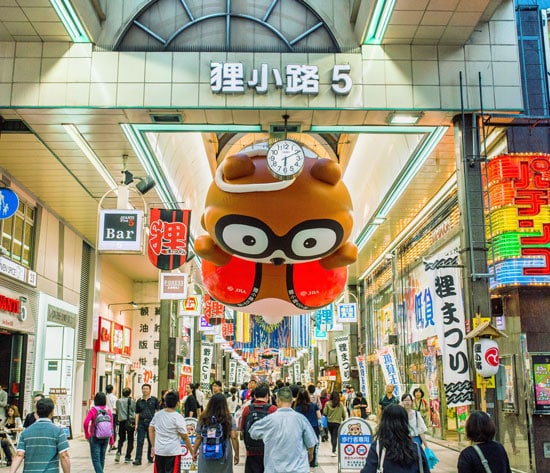
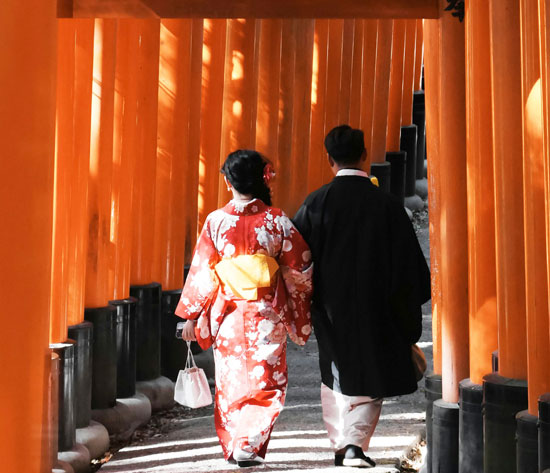
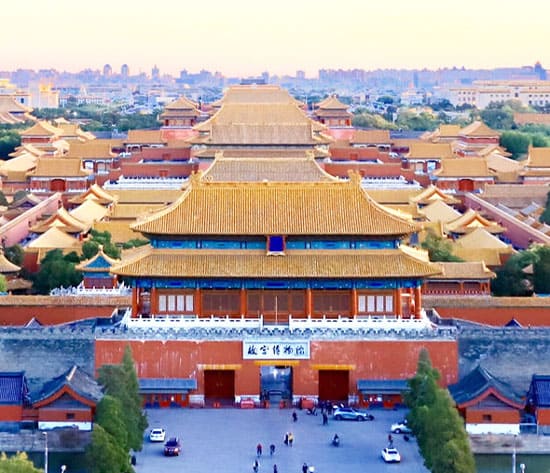
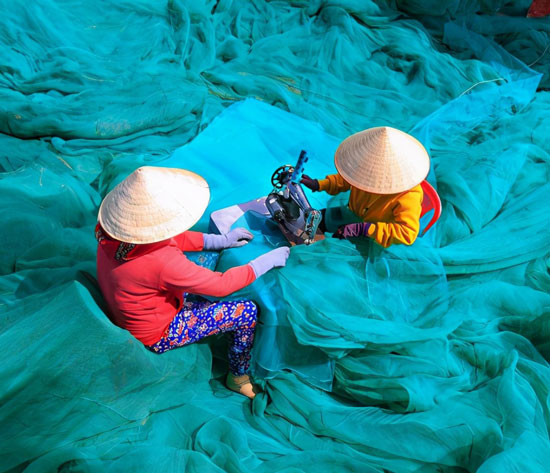
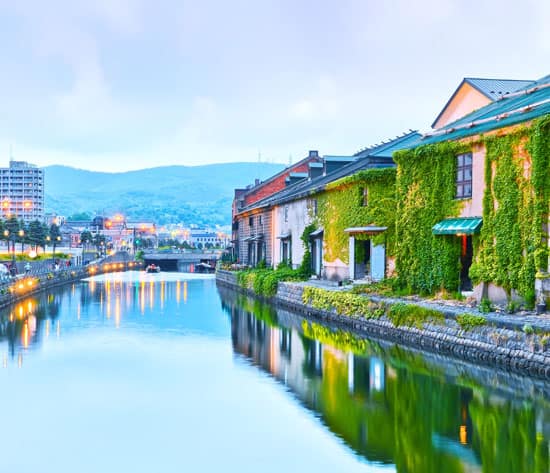
Have a Question?
You might see your comment appear on this page, but your email address and full name will not be published. Your personal information will remain confidential. Our Asia travel experts will get back to you as soon as possible. Required fields are marked *